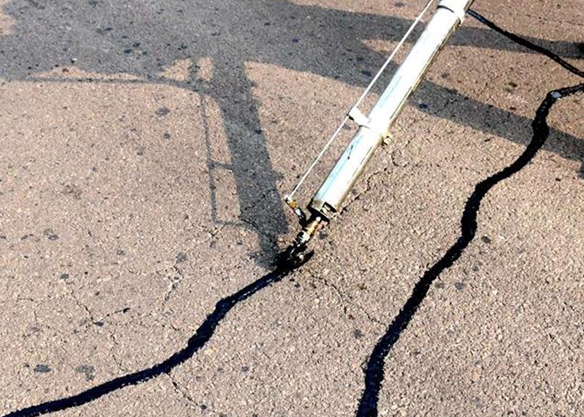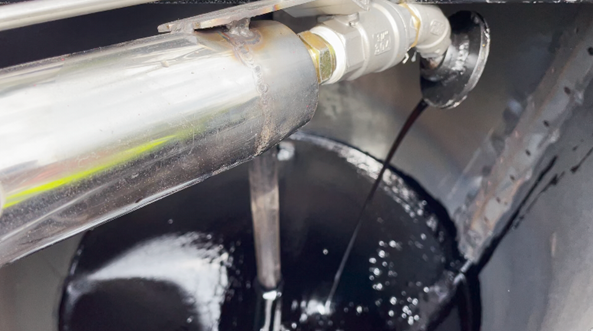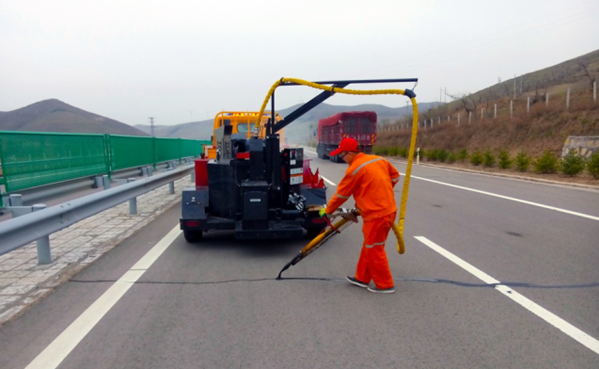 +
+
1. Safety protection
To ensure smooth traffic flow, construction should be carried out in stages on both sides of the road section. Cones should be used to seal off construction sections and warning signs should be installed.
2. Sealant heating

The temperature of road sealant must be controlled when heated and cannot be too high or too low, so as not to affect its performance and be detrimental to construction. Under normal circumstances, the temperature of the sealant in the heating kettle should be maintained at 190-200°C, and the temperature after leaving the kettle should be maintained at 170-180°C. The sealant needs to be continuously stirred when heating to ensure that it is heated evenly, otherwise it will cause local overheating and cause material aging.
3. Road drying and cleaning
Before grouting, the cracks need to be cleaned and dried. Use a hair dryer to remove gravel and dust from the cracks, then dry the cracks with a thermal spray gun. Uncleanness and moisture will affect the bond strength between sealant and pavement.
4. Filling the joints

After the sealant is heated to a suitable temperature, the caulking machine can be used to fill the joints. During construction, it is necessary to control the moving speed of the nozzle of the material gun. The sealant should fill the cracks and be 1-2mm above the ground to prevent the colloid from falling off later due to being too thin. Try to ensure that the grouting effect is beautiful.
5. Open traffic
When the sealant temperature falls below 40°C, it can be opened to traffic. When the temperature is higher than 40°C, the grouting material may be stuck to the driving wheels.